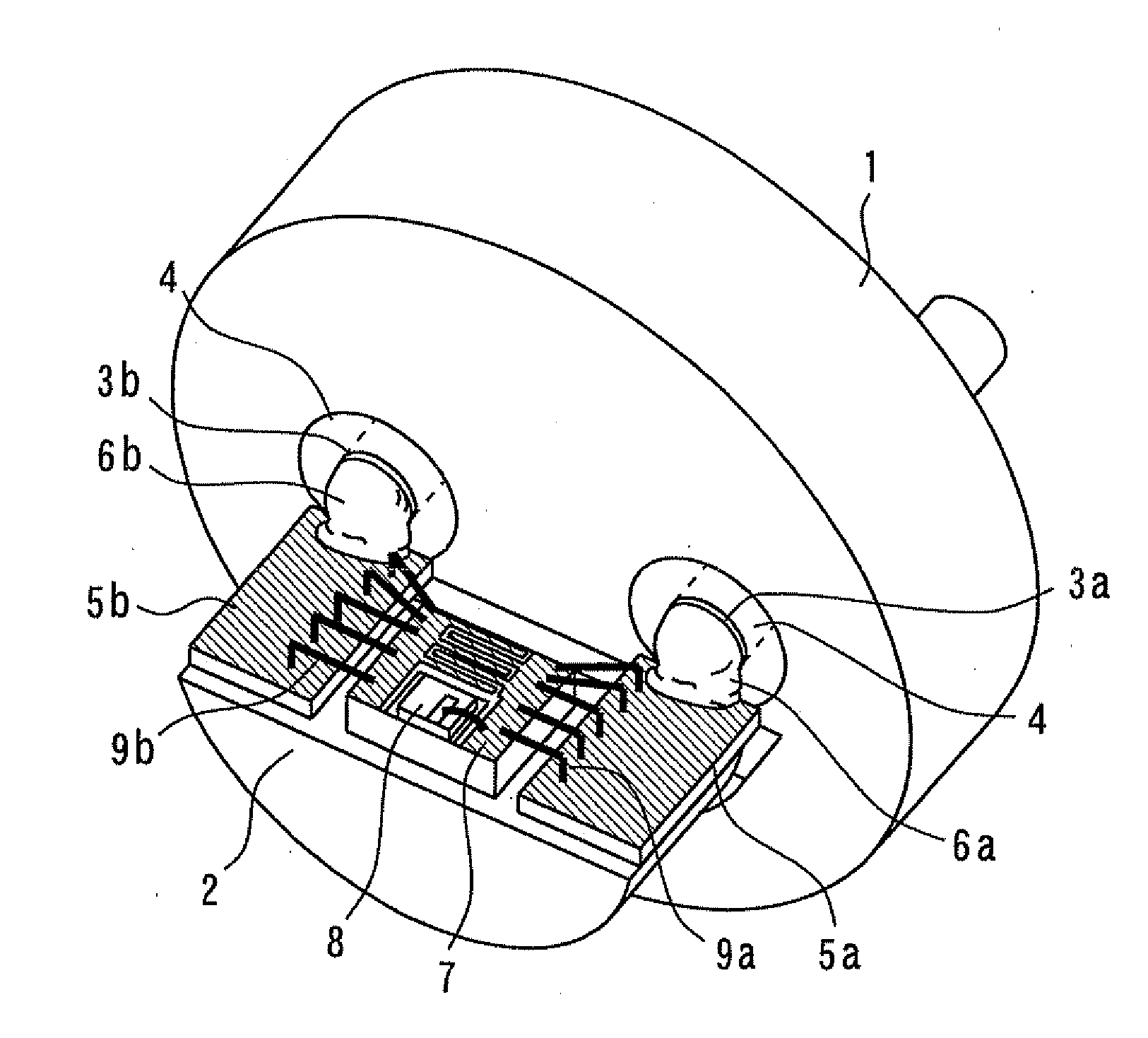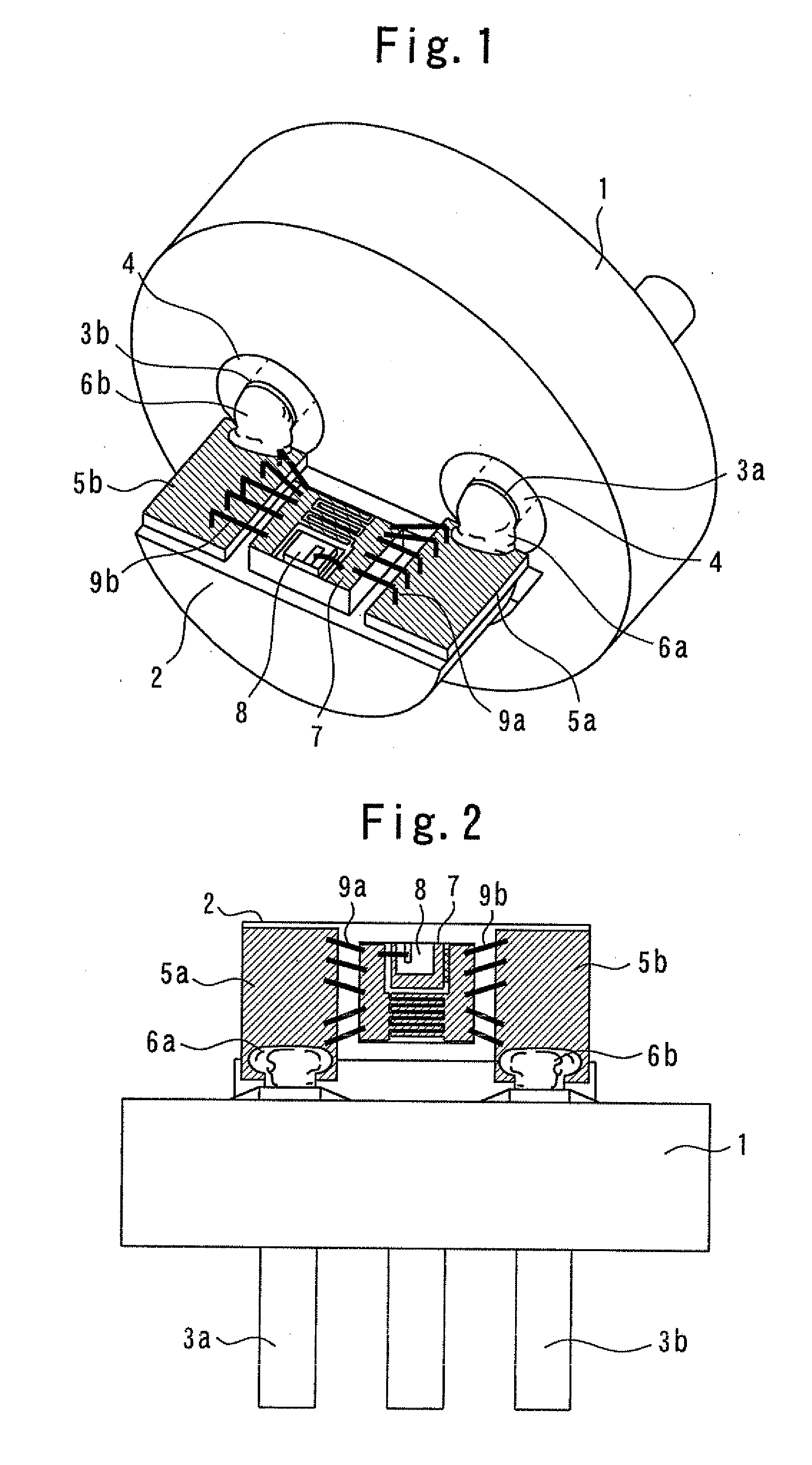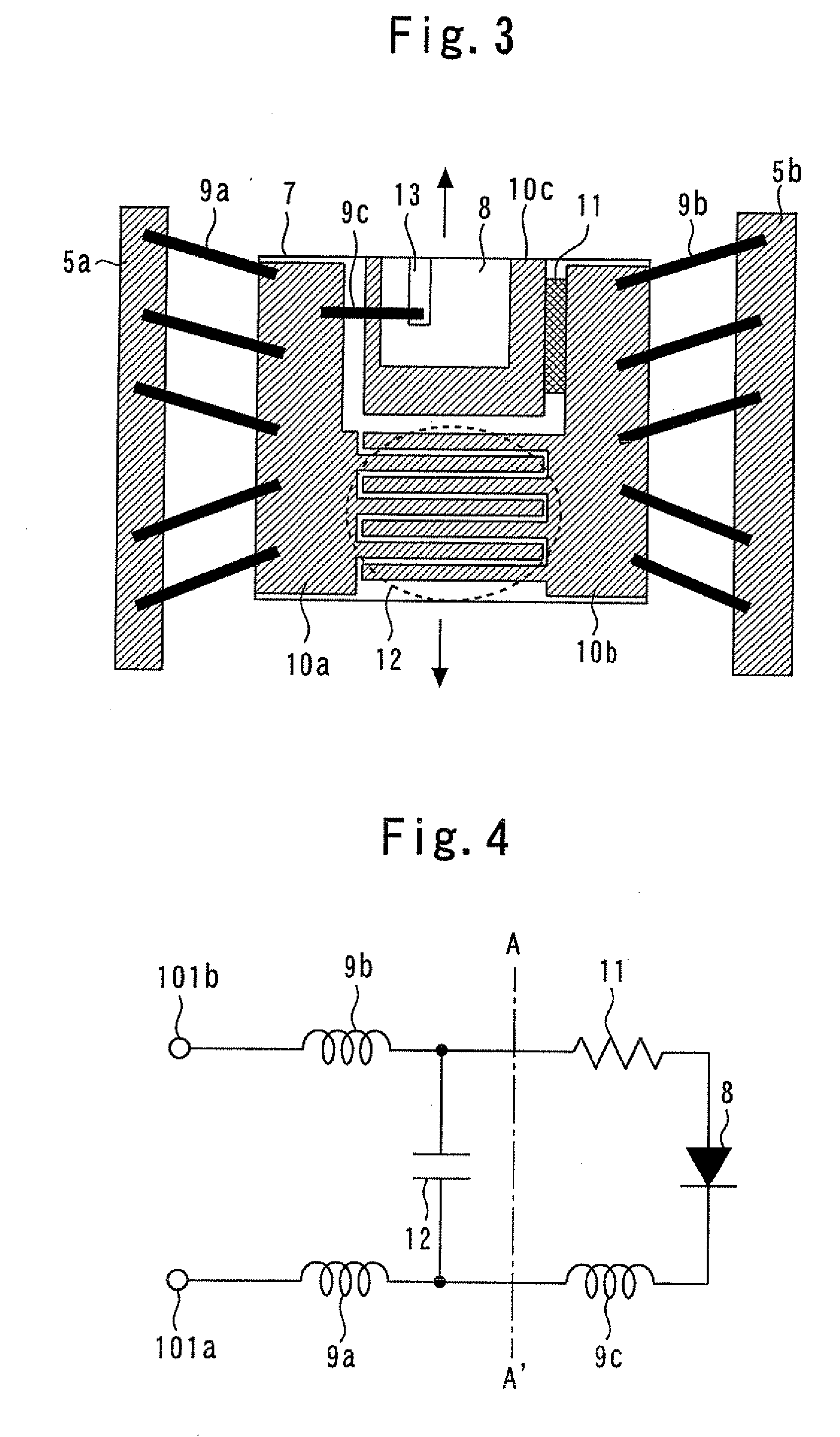Optical module
a technology of optical modules and optical components, applied in the field of optical modules, can solve the problems of increasing the value of the matching resistance, the power consumption of the device, and the mismatch of the impedance, so as to reduce the matching resistance, prevent the degradation of the signal reflection characteristic, and reduce the power loss
- Summary
- Abstract
- Description
- Claims
- Application Information
AI Technical Summary
Benefits of technology
Problems solved by technology
Method used
Image
Examples
first embodiment
[0023]FIG. 1 is a perspective view of an optical module according to a first embodiment of the present invention; and FIG. 2 is a plan view of the optical module shown in FIG. 1.
[0024]Referring to FIGS. 1 and 2, a stem 1 has a mount block 2 fixed thereto and also has two lead pins 3a and 3b therethrough that enable for electrical connection to an external device and that transmit a differential signal to the optical module. Sealing glass 4 is filled between the lead pins 3a and 3b, and the through-holes of the stem 1, to fix the lead pins 3a and 3b to the stem 1 while electrically insulating them from each other and to seal between the inside and outside of the optical module. It should be noted that the cap (not shown) sealingly enclosing the mount block 2, etc. defines the exterior surface of the optical module.
[0025]Further, a submount 7 and interconnection substrates 5a and 5b are mounted on the mount block 2. The interconnection substrates 5a and 5b are disposed at positions co...
second embodiment
[0047]FIG. 7 is a perspective view of an optical module according to a second embodiment of the present invention. According to the first embodiment, the submount 7 is electrically connected to the lead pins 3a and 3b through the interconnection substrates 5a and 5b, respectively, whose impedance is suitably adjusted, as described above. (The interconnection substrates 5a and 5b are disposed so as to sandwich the submount 7.) Therefore, the interconnection electrode patterns 10a and 10b of the submount 7 are connected to the interconnection substrates 5a and 5b by the wire bonds 9a and 9b, respectively. On the other hand, the optical module of the second embodiment is configured such that: the lead pins 3a and 3b (renamed as lead pins 3A and 3B) are extended so as to sandwich the submount 7; and these lead pins 3A and 3B are directly connected to the interconnection electrode patterns 10a and 10b by the wire bonds 9a and 9b, respectively. It should be noted that all other components...
PUM
 Login to View More
Login to View More Abstract
Description
Claims
Application Information
 Login to View More
Login to View More - R&D
- Intellectual Property
- Life Sciences
- Materials
- Tech Scout
- Unparalleled Data Quality
- Higher Quality Content
- 60% Fewer Hallucinations
Browse by: Latest US Patents, China's latest patents, Technical Efficacy Thesaurus, Application Domain, Technology Topic, Popular Technical Reports.
© 2025 PatSnap. All rights reserved.Legal|Privacy policy|Modern Slavery Act Transparency Statement|Sitemap|About US| Contact US: help@patsnap.com



